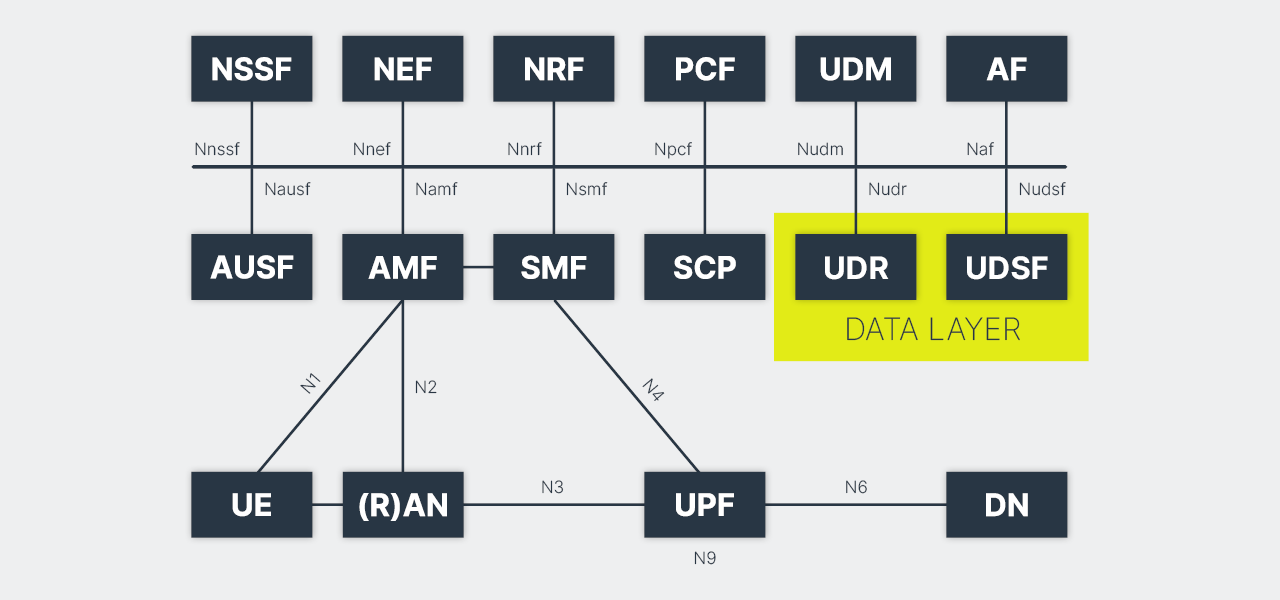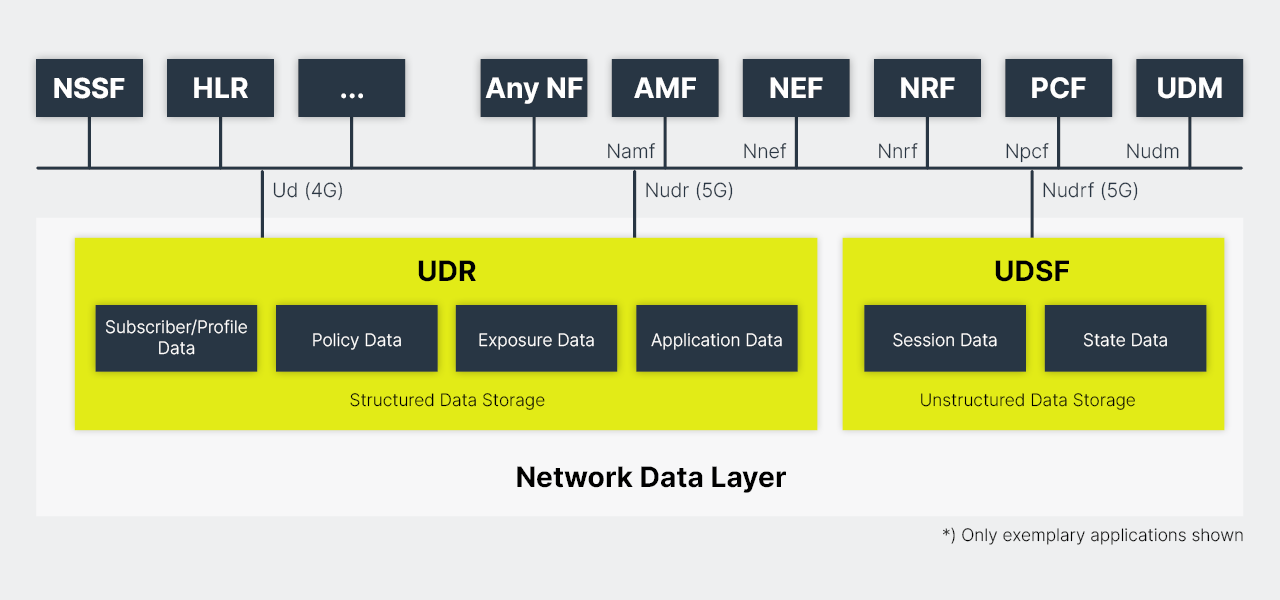Cloud


Overview
Subscriber-centric data architecture for telecoms
Network Function Virtualization (NFV) and the planned 5G service-based architecture will fundamentally transform network (NF) functionality. The network functions will implement more and more cloud native principles. For this purpose, off-line stateless functions are split off, while internal information about subscriber-specific session and registration states are outsourced to an external, cloud-based database. The network functions achieve much better scalability, elasticity and availability, and the network architecture is considerably simplified.
5G Core network architecture relies on service-based interfaces where network functions communicate with each other via REST/HTTP interfaces. The architecture separate the User Plane (UP) functions from the Control Plane (CP) functions, allowing independent scalability, evolution and flexible deployment scenarios. The dependencies between the Access Network (AN) and the Core Network (CN) are minimized. The architecture is defined with a converged core network with a common AN-CN interface which integrates different Access Types e.g. 3GPP access and non-3GPP access.
![]()
5G service-based architecture
Based on the depicted 5G service-based architecture here one can recognize the role of database in the architecture. The 5G architecture defines two types of data types:
The subscriber-specific data are stored in the User Data Repository (UDR) and can be accessed via the Nudr interface. UDR stores the data in a structured format and the data is shared with all (authorized) network functions.
The required session or state data of the network functions are stored in an Unstructured Data Network Storage Function (UDSF) and can be accessed via the Nudsf interface. This data is network function and manufacturer specific.

Increase customer satisfication with the right cloud database
Choosing an appropriate cloud database becomes essential to customer satisfaction as it becomes the foundation of all network capabilities and can significantly improve availability and operational costs.
Data layer network functions to support stateless applications
The new 5G architecture supports a new, cloud-native architecture of the network functions and defines the necessary components with well-defined interfaces.
The data layer network functions, UDR and UDSF, enable so-called state-less applications whose development, lifecycle management and, above all, the availability, robustness and resilience of the core network is improved.
Since the existing core networks cannot be replaced and at least 2G and 4G must continue to be supported, it makes sense to combine the database requirements of the existing and the new 5G network in a so-called Network Data Layer.
Interfaces of the Network Data Layer
The Network Data Layer offers three interfaces, the existing Ud interface (LDAP / SOAP) which supports subscriber data in 2G / 3G / 4G networks and the new 5G Nudr and Nudsf interfaces. The subscriber data can be shared via a common repository, which increases efficiency and data consistency within the providers network.

Our approach for cloud databases
To realize a viable cloud database which supports stateless and cloud-native network capabilities, a comprehensive analysis of the current system architecture, data structures, and data distribution is recommended.
Based on an as-is analysis, the target system architecture is defined and possible transformation and migration scenarios are evaluated. For the effective implementation of a cloud data architecture, a detailed step-by-step plan is defined together with the customer.
During the implementation phase, SilverEngine also supports its customers and the change process.
SilverEngine, with its longstanding experience, helps telecom companies to select the most appropriate databases, define implementation methods, and implement and deploy these technical solutions as well as cloud database and NVF providers to understand and comply with the requirements of an NSP-grade cloud database for the telecommunication industry.
Your benefits
Better customer service
Improved customer service and thus, better customer experience
Time-to-market
Faster implementation and promotion of new services and applications
Higher loyalty
Increase customer satisfacton and respectively, loyalty of users
OPEX-optimization
Improved performance and scalability as well as reduced OPEX
Our capabilities
SilverEngine is one of the pioneers in implementing Unified Data Repositories (Subscriber Data Management - One-NDS).
Right from the beginning, SilverEngine’s team has defined the requirements for cloud databases based on the planned 5G service-based architecture.
SilverEngine has in-depth knowledge of the latest technologies and many years of experience in the implementation of scalable, highly available and above all robust data center architectures.
Essential is also SilverEngine’s outstanding know-how regarding concept, architecture and functional and non-functional requirements as defined in the white paper “A Network Data Layer (NDL) Concept for the Telco Industry” issued by ngmn – next generation mobile networks.
IT knowledge
Practical experience
Methodological competencies
handcrafted by vividblack